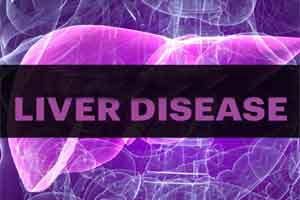- Home
- Editorial
- News
- Practice Guidelines
- Anesthesiology Guidelines
- Cancer Guidelines
- Cardiac Sciences Guidelines
- Critical Care Guidelines
- Dentistry Guidelines
- Dermatology Guidelines
- Diabetes and Endo Guidelines
- Diagnostics Guidelines
- ENT Guidelines
- Featured Practice Guidelines
- Gastroenterology Guidelines
- Geriatrics Guidelines
- Medicine Guidelines
- Nephrology Guidelines
- Neurosciences Guidelines
- Obs and Gynae Guidelines
- Ophthalmology Guidelines
- Orthopaedics Guidelines
- Paediatrics Guidelines
- Psychiatry Guidelines
- Pulmonology Guidelines
- Radiology Guidelines
- Surgery Guidelines
- Urology Guidelines
Pregnancy Rates on the rise among Women with Chronic Liver Disease

A new study presented this week at The Liver Meeting – held by the American Association for the Study of Liver Diseases – found that the overall number of pregnancies in women with chronic liver disease or following liver transplantation has risen over the past 30 years. In addition, the proportion of full‐term pregnancies has increased significantly over that time period, and most women had favorable pregnancy outcomes.
The study was conducted by researchers at King’s College Hospital in London – which has offered a multidisciplinary hepatology and obstetrics clinic for pregnant women with chronic liver disease since 2014 – in response to an increasing global burden of liver disease and a rising proportion of women of reproductive age who have been diagnosed with chronic liver disease or undergoing liver transplantation.
“The global burden of liver disease is increasing, according to a recent World Health Organization study. Accordingly, the number of women of reproductive age with liver disease has also risen,” says Tiong Yeng Lim, MD, clinical research fellow at the Institute of Liver Studies at King’s College Hospital and a lead investigator in the study. “The presence of liver disease and/or liver transplant confers certain risks to outcome of a pregnancy. The goal of our study was to assess the trends of pregnancy outcomes over the last three decades. This will help us towards identifying the predictors of successful outcomes in pregnancy and to improve pregnancy counseling in these women.”
The researchers conducted a retrospective analysis of all pregnancies occurring in women with chronic liver disease or following liver transplantation from 1983 to 2017 at Kings College Hospital. They identified patients from a prospectively collated database and extracted the data from patient records. The researchers then compared the results of these pregnancies in three different time periods: 1983‐ 1996, 1997‐2006 and 2007‐2017.
The study showed 327 conceptions occurred in 193 women, including 80 pregnancies in 40 women with cirrhosis, 85 pregnancies in 52 women without cirrhosis, and 162 pregnancies in 93 women after liver transplantation. The cause of liver diseases in these patients included 35 percent with autoimmune hepatitis, 18 percent with metabolic/congenital liver disease, seven percent with drug toxicity, seven percent with primary biliary cirrhosis/primary sclerotic cholangitis, six percent with biliary atresia, seven percent with seronegative liver failure, and six percent with viral hepatitis. Data was available for 313 conceptions for comparison.
The number of pregnancies increased over the three time periods, from 30 prior to 1997, to 102 between 1997 and 2006, and then to 181 since 2007. The median age at conception was similar: 28 years for 1983 to 1997, 29 years for 1997 to 2006 and 29 years since 2007. Corresponding live birth rates were 73 percent, 70 percent and 87 percent, respectively. Prematurity rates, or gestation of less than 37 weeks, reduced significantly over time: 67 percent from 1983 to 1997, 31 percent from 1997 to 2006, and 26 percent from 2007 to the present. Rates of elective termination decreased from 10 percent from 1983 to 1997 and 1997 to 2006 to four percent after 2007. Miscarriages and stillbirths also decreased over these time periods. Finally, for patients where data was available, caesarean section rates also decreased significantly.
“From the findings in our unit, the number of pregnancies has increased significantly over this time period. The rate of live births has improved, and additionally, the rate of premature births has also reduced,” says Dr. Lim. “The improvements in these outcomes are likely due to a combination of factors, including the advances in both hepatological and obstetric care. Therefore, we believe that these women would benefit from a multidisciplinary care approach.”

Disclaimer: This site is primarily intended for healthcare professionals. Any content/information on this website does not replace the advice of medical and/or health professionals and should not be construed as medical/diagnostic advice/endorsement or prescription. Use of this site is subject to our terms of use, privacy policy, advertisement policy. © 2020 Minerva Medical Treatment Pvt Ltd